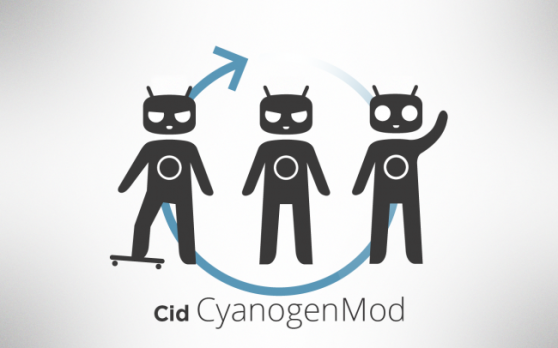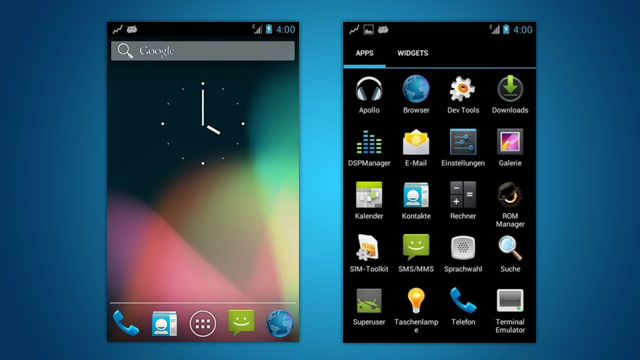Could a former Android modification end up becoming a dominant mobile platform?
Cyanogen, maker of the replacement Android OS CyanogenMod, announced today that it has raised an additional $23 million led by Andreessen Horowitz to do just that. The news comes just three months after the company announced that it was going legitimate with $7 million in funding.
CyanogenMod (CM) completely replaces the operating system on your Android device with a custom image sporting a modern version of Android, support for multiple themes, and some tweaks. But what’s most compelling about CM is what it doesn’t have: Namely, the often annoying custom software that manufacturers place on top of Android (like Samsung’s TouchWiz platform).
The 22-person company aims to hire 40 to 50 people in the next 6 to 7 months, CEO Kirt McMaster told me in an interview, and it’s also opening an office in Shenzen, China. Android modifications (many of which are based on CM tweaks) have been huge in China, reaching around 25 million users so far. Globally, the market for Android mods has reached 60 million users. McMaster tells me Cyanogen now has 11 million users worldwide, and it aims to convert many existing Android mod users.
“We believe that the third dominant mobile computing platform will rise from the first, the mighty Android,” McMaster said. The new funding, then, positions Cyanogen to take that spot.
While it looks like Cyanogen is scoring this latest funding on the heels of its last round, McMaster tells me it actually closed its initial $7 million round back in March. Andreessen Horowitz initially fished around the company for its first round, but ended up not participating. Now the VC firm is leading Cyanogen’s second round, with participation by existing investors Benchmark and Redpoint. Andreessen partner Peter Levine will be joining Cyanogen’s board.

CyanogenMod for everyone
The company plans to launch a new consumer brand at some point over the next few years that won’t have the Cyanogen name, McMaster says. That brand will help to show non-geeks the benefits of tweaking their phone’s software, though Cyanogen is still figuring out exactly how to do that. The company plans to hire more designers to create consumer-friendly services (right now its employees are mostly on the engineering side). In many ways, Cyanogen’s path resembles Android’s — Android only appealed to geeks until Google started focusing on design.
Cyanogen still faces a major problem when it comes to going mainstream: Installing its software involves putting your Android phone in a special debugging mode and then completely replacing your phone’s OS. That’s a potentially dangerous process — if something goes wrong, it could render your phone completely inoperable (“bricked” being the geeky term).
In a bid to attract more users, Cyanogen recently launched a CM companion app on the Google Play store, which detailed the process of flashing your phone with CM. Google ended up kicking that app out of Google Play last month, a move that McMaster calls “ridiculous” since the app didn’t actually change any of your phone’s settings.
After some talks with Google (McMaster confirms Google “really likes” Cyanogen), he expects a new Google Play Cyanogen app to launch in the first quarter of 2014. The app could sport some newer features, including the ability to back up your current Android OS (something the company experimented with for the first app).
When I asked if Cyanogen would want to follow in the footsteps of Facebook’s Home launch screen, which completely changes the way your Android home and lock screen looks without installing a whole new OS, McMaster was quick to shoot down that idea: “We’re not interested in creating launchers or home screens for Android,” he said.
But at the same time, McMaster says that could be a way for Cyanogen to “bait” new users. The company could potentially create a sample home screen to show off the benefits of the full Cyanogen installation, for example.
A modification maturing
As Cyanogen’s priorities move away from just offering an open source Android modification and towards building a legitimate business, I wondered if the company would begin to lock down the way other developers built off of Cyanogen’s tweaks.
“There’s a line between open source and closed source, we’re always going to have a large open source portion,” McMaster told me. “As we’re going to build our own services and features, some of these things are going to be closed off, it’s as simple as that. … We have to build a business here.”
Those additional services and features will likely be the way Cyanogen starts to make money. While it will likely never charge for the CyanogenMod image, the company could offer additional tweaks and options for an extra fee.
Given all of its recent investor interest, I asked McMaster if he would ever consider just selling to Google (which recently bought Android optimizing company FlexyCore for $23 million).
“It’ s not a consideration right now, to be honest,” he said. “I think there’s significantly more of an opportunity and upside here in the long term than an acquisition in the short term. If you talk to Benchmark or Andreessen, they would agree. … One of the things that excites Benchmark is that we have so much optionality. With Cyanogen, they can go in a million different directions [in mobile ].”
VentureBeat's mission is to be a digital town square for technical decision-makers to gain knowledge about transformative enterprise technology and transact. Learn More

